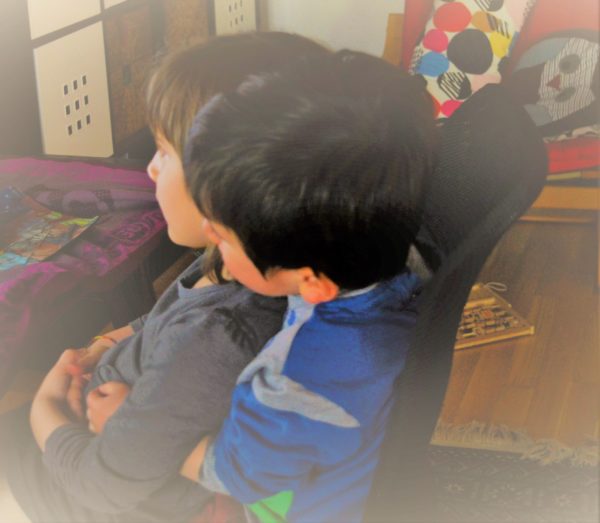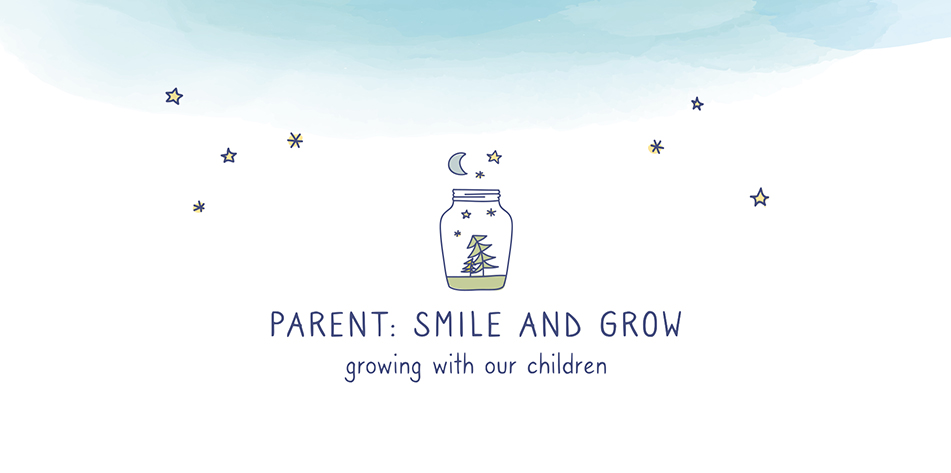When we lose our temper with our children, our first automatic reaction is raising our voice, maybe a light spank… What if the solution was give them cuddles and snuggling them?! If it seems counter-intuitive to use cuddles in order to stop undesirable behavior, read along! You could change your mind.. and cuddles science could really help you.

Table of Contents
Small frustrations get bigger
Let’s picture a typical evening at home.
I just went grocery shopping with the children, before heading home, exhausted after a long day. I had agree I would call my sister and my parents, who live far away, on a Whatsapp video to tell them about our latest week.
The children were happy at first, then got easily annoyed for my lack of availability for them. As soon as I started to talk about “more serious” topics, they followed me everywhere interrupting me every two and a half words.
First time, I stayed calm and gently asked to wait and don’t intervene. I got mad at about the tenth time, but as I now know this behavior very well, I got the clue and quickly ended the call.
My quizzical look said “How do I get to prepare dinner now that the children just emptied their “reservoir” and need me again?”
So, I tried with the “aperitif technique”. I called the children by the kitchen table, and offered them to have a pre-dinner snack while I was getting the dinner ready, so that we could be in proximity; yes, I was really hoping that some food could replace my mental presence.
Cuddles’ need – underestimated symptoms
(When we would like to temporarily shut them in their room and not see them for a little hour)
I did a mistake, though. I noticed I had some new messages on my phone, and started to reply. My corpus callosus is probably not thick enough, so when I’m concentrating on an answer I cannot concentrate on my children’s requests at the same time.
So not only I lost some precious minutes for my dinner meal prep, but I also lost my connection with them once again. Which ended in.. silly and provocative behavior on behalf of my kids, and some more exhaustion and unnerving on mine.
.I made a plan out loud : why don’t we just have dinner, you guys can help me put the table on, and then, before we go to bed, we can play to Super Farmer ? (a new present for the records; it is a funny game best suited for 4 year-olds and up, but my son can participate as well, which makes it a great family activity!)
NO MOM, I WANT YOU TO READ US A STORY NOW!
(picture my daughter’s high-pitched, imperious voice)
Breathe.
Honey, I am very tired, why don’t we just eat and then I will read the story to you?.
NO!
Breathe again.
Uhm. Ok, then come here and help me put the table while I finish to prepare the dinner, and then we’ll read the story before we eat..
NO! I DON’T WANT TO HELP YOU! I’M TIRED AND YOU ALWAYS DO THE WORK FOR US, I DON’T WANT TO HELP YOU! WHY SHOULD I ?!
How can you let an answer like that pass on a not-yet-5-year-old? What would she become at 15 (not to mention to us parents) ?
When cuddles rhyme with paying attention – and they work
I had understood that she just needed me, but I still wanted her to say sorry, get up and help me, just like her little brother was doing in the meantime, by the way.
So, I tried to get her close to me, but she just kept yelling, which led me to lose control and yell in return. Until she could finally spit out that she was mad at me because I didn’t answer to her while I was on the phone.
A-ah! She just wanted me all the time; I was not giving her enough love and caring after the long day she had on her own.
I told her I was sorry, but that her behavior was not acceptable, and that she was only getting bad attention instead of good cuddles. We restored things with cuddles and a story (after she helped me with the table prep!). And then things got a lot better until (almost) bed time.
What happened there?! And how can we do better next time?
Cuddles’ theory
In several readings I had the chance to come across to, stress factor was underlined as one of the main causes of children misbehavior or problems.
Talking about stress in itself is a complex issue and I resolve myself to do it in more detail in a separate post. Still, what we adults need to know in this case is that stress is a physical response, starting in the brain and then demanding a reaction in the body.
I’m not talking about the stress we adult may face in the work place, or when we experience financial or relationship problems, etc. Even as babies, children experience stress when their needs are not met. Among these needs, there is physical contact and proximity with his/her primary caregiver, or attachment figure.
Let’s picture ourselves as school boys or girls.
Let’s remember having spent the whole day with our classmates and teachers, with all the social pressure that it implies. We have to show that we fit in the group, that we are just as like the others in order to be accepted, and so we suppress a little our feelings and our peculiarities. This is all difficult and.. stressful.
So when we finally come back home, in a secure environment, we just can’t wait to be with our mom and dad who know who we are, accept us and love us and support us; and that’s when we let go of all of the tensions we experienced during the day.
That’s when we just can’t hold it in anymore, when we snap back at innocent comments or loose patience for nothing, and hey, I was talking about when we were little in school, but doesn’t it sound a lot like today when we come back home from work? The mechanisms are the same. We release our tensions in a secure environment.
What happens inside us
When facing a stressful event, the amygdala releases a series of hormones that signal to the hypothalamus and other areas of the brain to give a response. This is called the “fight or flight” response. Chemically, the hypothalamus releases cortisol, which is a hormone responsible for a series of physical reactions such as changes in sugar levels in the blood and in blood pressure, immune responses, increased heart rate, etc.
These physical reactions create an inner tension that can be expressed in aggressive behavior (fight response) or paralysis (flight response).This is as if we were playing dead so not to feel the pain. That’s where physical punishment make actually things worse, because they increase the stress level and the child just cannot contain and release this tension. It may help us release our tension.. But we better remember this to act consciously.
A lot of this is explained in the beautiful book “Il me cherche!“ of French author Isabelle Filliozat, unfortunately not yet translated into English. (If you do read French, you can find my resume for this book here).
Solutions anywhere?
In this case, the first thing to do is helping our kids regain a calmer state, by eliminating the cortisol. Oxytocin works great! We produce it.. with lots of cuddles and physical contact. It works for adults too: if we feel our cortisol level is increasing in ourselves (frustration mounting!), the first thing to do is take a deep breath, and stay calm.
Then :
- Soft, comforting voice
- As many displays of affection and empathy as we possibly can (cuddles again!).
- For younger children : physically containing them, holding them tight to our chest
- for older ones : we can start to talk about their feelings and what has just happened inside them; take them for a walk outside or to do a physical activity for instance.
With my children, taking deep breaths together as we do when we practice yoga works very well (on the beneficial effects of breathing, you can also refer to the dedicated post).
Above all, a lot of cuddles.
In practice…
During that evening, I asked my children to stop saying “Poop” all the time, especially as we were eating. Since my words came out apparently unheard, I got so upset that I.. gave myself a time-out.
I closed myself in the bathroom, and boy, the children chased me right away and begged me to get out. Which made them promise to stop the annoying behavior so.. it kinda worked!
See, I chose this solution because I did not want to menace or threat them. It allows me to calm down and see the situation from another perspective.
Breathe, breathe, and calm down, avoiding the screaming escalation.. and then snuggling them back again. Oxytocin-raising cuddles 😉
The lesson I’ve learnt? I need to take earlier cues on when my children start to get saturated and need me. Then stop everything I’m doing and spend 5 minutes just with them, so that they get a recharge. Otherwise it can then be too late! 😉
What do you do when you lose your temper? Do you have any magic tricks that work for you? Write them in the comments section below!
And if you haven’t done it already, sign-up to our mailing list to get our newsletter!
